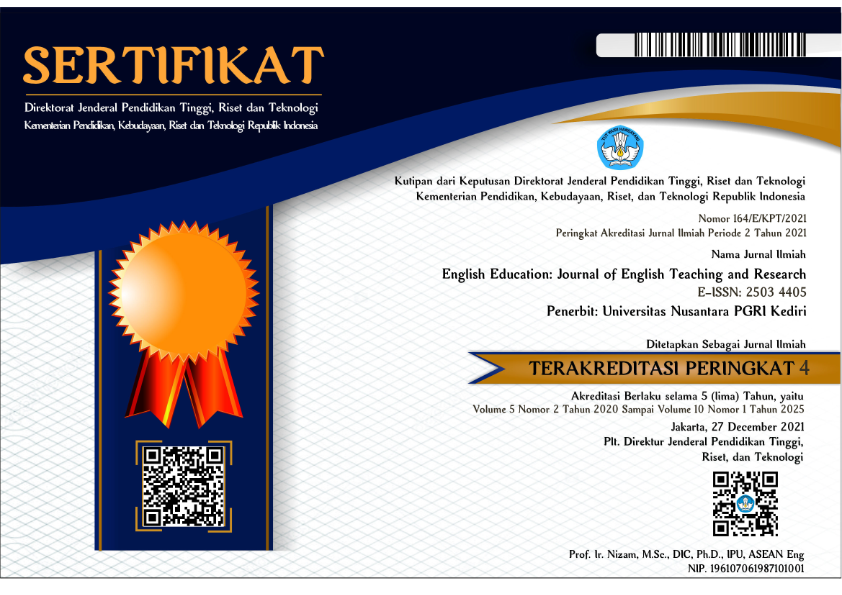The Use of Visual Media in Teaching Writing
DOI:
https://doi.org/10.29407/jetar.v1i1.274Abstract
Writing is the difficult skill in learning English. To make students get the idea in writing easily the teacher should be creative and innovative. The Application of visual media can help students get idea easily. This research aimed at knowing the application of visual media and the students’ responses in teaching writing to eleventh grade students of SMAMuhammadiyah Kediri.This qualitative research took place in SMAMuhammadiyah Kediri. The subject of this research was the eleventh grade students that consist of 17 male and 15 female students. In order to collect the data , observation, interview, questionnaire and the documentation were used. The application of visual media helped the students write easily. The teacher applied visual media to help the students write good sentences.The theme of the material is narrative text and the teacher applied picture series. The activity was devided into three steps (pre,whilst,post) start from make a simple sentence based on the picture series then compose a paragraph based on the simple sentences. By using visual media application in teaching writing the students gave good responses. They paid attention to the teacher’s explanation very well anddidthe task one by one. The students got more vocabulary, creativity in writing process. It deals with 67.76% students answered yes and 32.24% students answered no. It can be concluded that visual media application in teaching writing helps the students write easily as it helps the students to be more creative in finding the ideas and developing vocabulary. So it is suggested to the English teacher to improve the material, use this media in teaching other skills and. For the further researcher it is hoped that this research can give more information and contribution in conducting similar topic of discussion.
Downloads
Downloads
Published
Issue
Section
License
Authors who publish with this journal agree to the following terms:
- Copyright on any article is retained by the author(s).
- The author grants the journal, the right of first publication with the work simultaneously licensed under a Creative Commons Attribution License that allows others to share the work with an acknowledgment of the work’s authorship and initial publication in this journal.
- Authors are able to enter into separate, additional contractual arrangements for the non-exclusive distribution of the journal’s published version of the work (e.g., post it to an institutional repository or publish it in a book), with an acknowledgment of its initial publication in this journal.
- Authors are permitted and encouraged to post their work online (e.g., in institutional repositories or on their website) prior to and during the submission process, as it can lead to productive exchanges, as well as earlier and greater citation of published work.
- The article and any associated published material is distributed under the Creative Commons Attribution-ShareAlike 4.0 International License








 Article template
Article template



